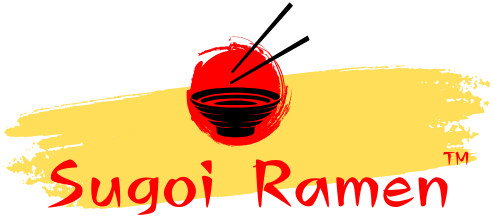The popularity of ramen has evolved from a humble Japanese dish to a global culinary phenomenon, captivating food lovers across continents. Its journey is not just about taste but also reflects cultural exchanges, innovative adaptations, and a deep-rooted history. In this article, we dive deep into the world of ramen to uncover why it has become such a beloved dish worldwide.
The Origins of Ramen: A Historical Perspective

Ramen, often mistaken as a purely Japanese creation, has its roots in Chinese culinary traditions. Introduced to Japan in the late 19th century, ramen began as a simple noodle soup served with soy sauce or salt-based broth. Over time, the Japanese added their own flavors, transforming it into the diverse dish we know today.
Key Elements of Traditional Ramen
- Broth: A rich base that varies across regions—ranging from miso in Hokkaido to tonkotsu (pork bone) in Kyushu.
- Noodles: Springy wheat noodles that soak up the broth’s flavors.
- Toppings: From marinated eggs and seaweed to chashu pork and scallions, toppings elevate ramen into a hearty meal.
Cultural Significance of Ramen in Japan
In Japan, ramen is more than just food; it’s a cultural staple. Ramen shops, or ramen-ya, are ubiquitous, each offering unique regional flavors. Beyond being a convenient meal, ramen is celebrated in festivals and specialty museums, such as the Shin-Yokohama Ramen Museum, showcasing its importance in Japanese identity.
Regional Varieties That Define Ramen Culture
- Sapporo Ramen: Known for its miso-based broth and butter toppings.
- Hakata Ramen: Features ultra-thin noodles and creamy tonkotsu broth.
- Tokyo Ramen: A shoyu (soy sauce) broth with medium-thick noodles.
The Global Spread: How Ramen Conquered the World
The popularity of ramen began to rise internationally post-World War II, spurred by instant ramen’s invention by Momofuku Ando in 1958. Affordable, convenient, and flavorful, instant ramen became a pantry staple worldwide.
Modern Ramen Craze

In the 21st century, ramen transcended its convenience food image. High-end ramen restaurants, such as Ichiran and Ippudo, have opened in major cities globally, offering gourmet experiences. Chefs have also started experimenting with fusion ramen, blending flavors from Italy, Korea, and the United States.
Why Is Ramen So Popular?
The popularity of ramen can be attributed to several factors that resonate with food enthusiasts:
- Versatility: Ramen can be tailored to suit any palate, from vegan broths to spicy miso blends.
- Comfort Food Appeal: Its warm, savory flavors provide a sense of comfort and satisfaction.
- Accessibility: Whether it’s a $1 instant packet or a $20 gourmet bowl, ramen is available for every budget.
- Social Media Influence: Ramen’s vibrant presentation makes it highly Instagram-worthy, attracting a younger audience.
The Art of Crafting Ramen: A Culinary Marvel
Creating authentic ramen is an intricate process that involves balancing flavors, textures, and aesthetics. Every element—from simmering the broth for hours to perfectly marinating eggs—is crafted with precision.
Components That Make Ramen Irresistible
- Broth Mastery: Bone-based broths are simmered for hours, extracting rich umami flavors.
- Noodle Expertise: Hand-pulled or machine-made, noodles are crafted to complement the broth.
- Topping Creativity: Unique garnishes like truffle oil, cheese, or kimchi add a modern twist.
Ramen’s Role in Pop Culture

Ramen has a unique place in pop culture, often appearing in anime, films, and literature. From Naruto Uzumaki’s obsession with Ichiraku Ramen to movies like Tampopo, ramen has become a symbol of comfort and joy. These representations further fuel the popularity of ramen, making it a cultural icon.
Health and Nutritional Aspects of Ramen
While instant ramen is often criticized for its high sodium content, traditional ramen offers numerous health benefits. The inclusion of fresh vegetables, lean proteins, and nutrient-rich broths can make ramen a balanced meal. Moreover, innovations like gluten-free noodles and low-sodium broths cater to health-conscious consumers.
The Future of Ramen: Innovations and Trends
Ramen’s journey is far from over. Emerging trends show a focus on sustainability, health, and fusion cuisines:
- Plant-Based Ramen: Vegan broths and meat alternatives are gaining traction.
- Sustainable Practices: Restaurants are adopting eco-friendly methods, such as using local ingredients and biodegradable packaging.
- Fusion Flavors: From Mexican-inspired ramen with mole broth to ramen burgers, innovation knows no bounds.
How to Enjoy Ramen Like a Pro
For true enthusiasts, enjoying ramen involves more than just eating. Here’s how to savor it authentically:
- Sip the Broth First: Appreciate the chef’s craftsmanship.
- Slurp Loudly: It’s not only polite but enhances the flavors.
- Experiment with Condiments: Add chili oil, vinegar, or garlic to customize your bowl.
Conclusion: The Timeless Allure of Ramen
The popularity of ramen lies in its ability to adapt while staying true to its roots. From bustling streets of Tokyo to trendy restaurants in Mumbai, ramen continues to win hearts across generations. It’s more than a meal; it’s a global symbol of comfort, culture, and culinary artistry.
FAQ’s
Q1. What makes ramen so popular worldwide?
Its versatility, comforting flavors, and cultural significance make ramen a global favorite.
Q2. How has ramen evolved over the years?
Ramen evolved from a Chinese-inspired dish to a Japanese culinary icon and now a global phenomenon with endless variations.
Q3. Is ramen healthy to eat regularly?
Traditional ramen can be nutritious when made with fresh ingredients, though instant ramen should be consumed in moderation due to high sodium.
Q4. What are some unique ramen trends?
Plant-based broths, fusion flavors, and sustainable practices are shaping the future of ramen.
Q5. Where can I experience authentic ramen?
Authentic ramen can be found in specialty ramen-ya, gourmet restaurants, and even in cultural hubs like the Shin-Yokohama Ramen Museum.







